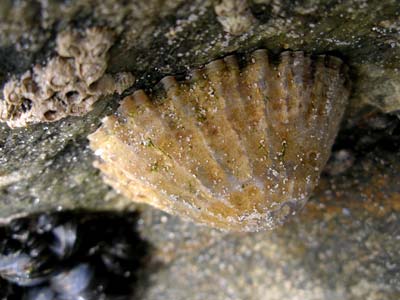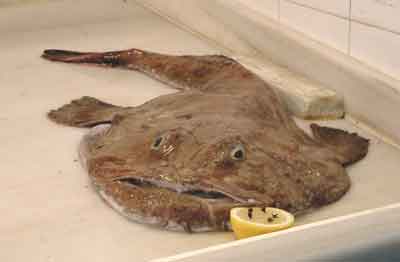
Limpet, a conical, univalve shellfish. These they may be cooked by washing them and then boiling them for about 5 minutes in seawater (or heavily salted water) is recommended. They have a small amount of meat and it is inclined to toughness, like a lot of those things that cling onto rocks. Alternatively the meats can be dug out and used in fish stews or chowders or in sauces to garnish other fish.
Triggerfish. A brightly coloured Mediterranean fish, more common in the southern Mediterranean than than the northern. It must be skinned before cooking as the skin is very tough.

Monkfish (US: angler fish). A fish with a sweet flavour and succulent firm flesh but with the ugliest appearance imaginable. It is found in the Mediterranean and Atlantic, in coastal waters of north western Europe. It can be recognised by its large head and fan-shaped fins. The fins and the operculum are spiny. It can be eaten fried or in soup. The larger fish often have better flavour. It has a hideous head, which is why it is usually displayed without it, and a muddy colour. It is known as the anglerfish as it bears on its head a 'rod' and 'lure' which attract its prey. The meat of the tail is sweet and succulent - almost like lobster meat, entirely compensating for is appearance. The flavour may well be assisted by its own diet which is high in shellfish. The best monkfish are Lophius piscatorius and the similar Lophius budegassa, the favourite of the Spanish. American monkfish or goosefish (Lophius americanus) is considered inferior, while New Zealand monkfish (Kathetostoma giganteum) is related to the stargazer and is only fit for soup.